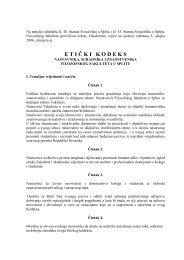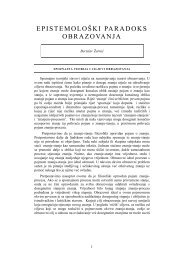Understanding Human Communication
Understanding Human Communication
Understanding Human Communication
You also want an ePaper? Increase the reach of your titles
YUMPU automatically turns print PDFs into web optimized ePapers that Google loves.
298 PART THREE COMMUNICATION IN GROUPS<br />
CULTURAL IDIOM<br />
freewheeling: unrestricted<br />
thinking<br />
Source: By permission of John L. Hart and Creators Syndicate, Inc.<br />
that, although no single approach is best for all situations, a structured procedure<br />
produces better results than “no pattern”discussions. 11<br />
The following problem-solving model contains the elements common to most<br />
structured approaches developed in the last eighty years:<br />
1. Identify the problem<br />
a. What are the group’s goals?<br />
b. What are individual members’ goals?<br />
2. Analyze the problem<br />
a. Word the problem as a probative question<br />
b. Gather relevant information<br />
c. Identify impelling and restraining forces<br />
3. Develop creative solutions through brainstorming or the nominal group<br />
technique<br />
a. Avoid criticism at this stage<br />
b. Encourage “freewheeling”ideas<br />
c. Develop a large number of ideas<br />
d. Combine two or more individual ideas<br />
4. Evaluate the solutions by asking which solution:<br />
a. Will best produce the desired changes<br />
b. Is most achievable<br />
c. Contains the fewest serious disadvantages<br />
5. Implement the plan<br />
a. Identify specific tasks<br />
b. Determine necessary resources<br />
c. Define individual responsibilities<br />
d. Provide for emergencies<br />
6. Follow up on the solution<br />
a. Meet to evaluate progress<br />
b. Revise approach as necessary<br />
IDENTIFY THE PROBLEM Sometimes a group’s problem is easy to identify.The<br />
crew of a sinking ship, for example, doesn’t need to conduct a discussion to understand<br />
that its goal is to avoid drowning or being eaten by a large fish.<br />
There are many times, however, when the problems facing a group aren’t so<br />
clear. As an example, think of an athletic team stuck deep in last place well into<br />
the season. At first the problem seems obvious: an inability to win any games.<br />
But a closer look at the situation might show that there are unmet goals—and thus<br />
other problems. For instance, individual members may have goals that aren’t<br />
tied directly to winning: making friends, receiving acknowledgment as good ath-

















